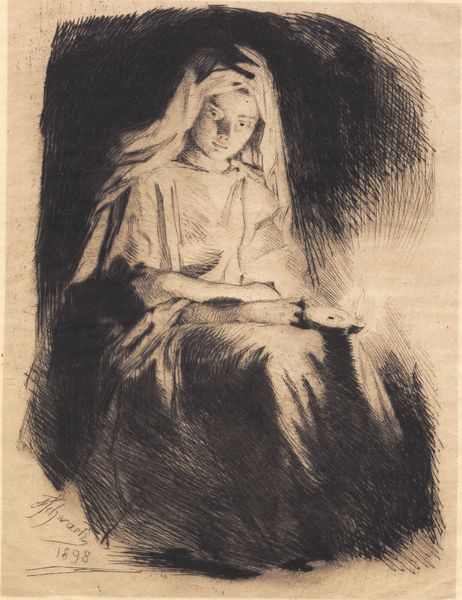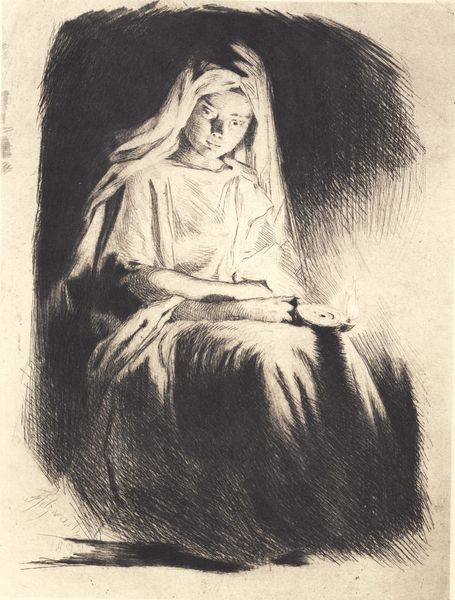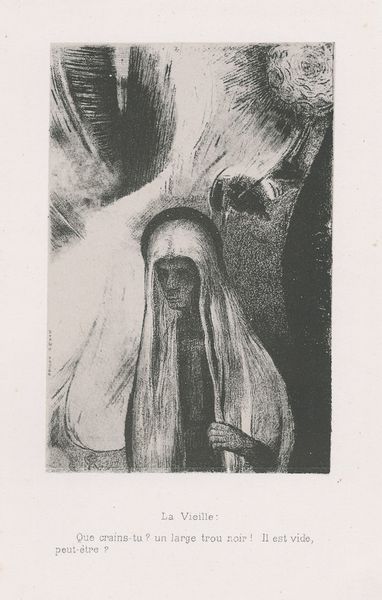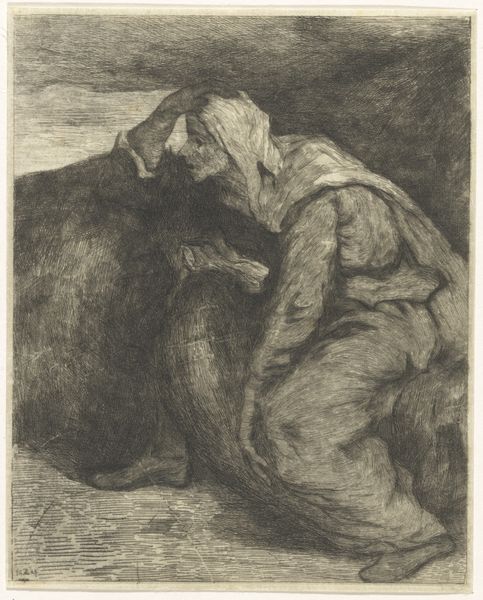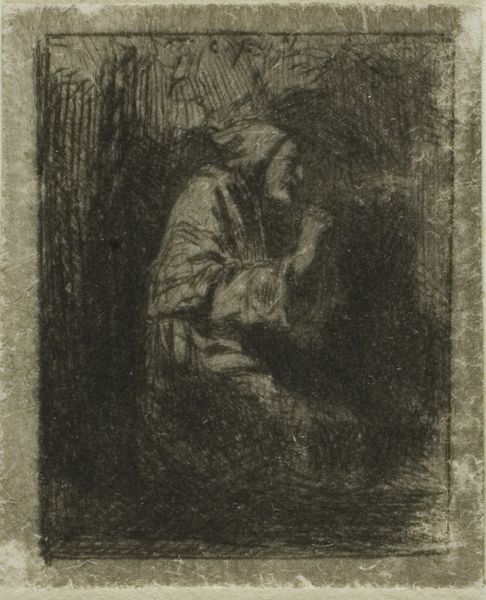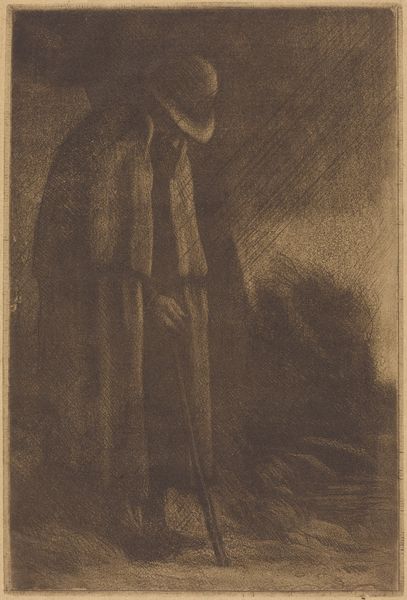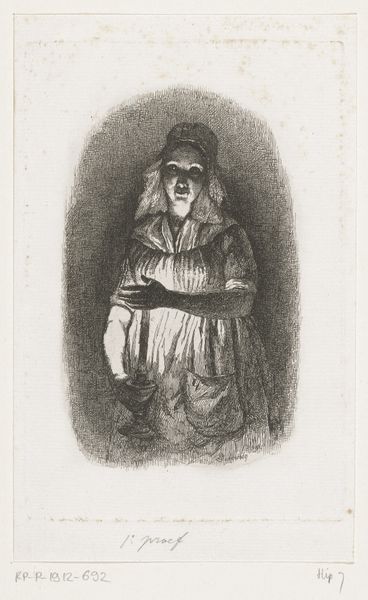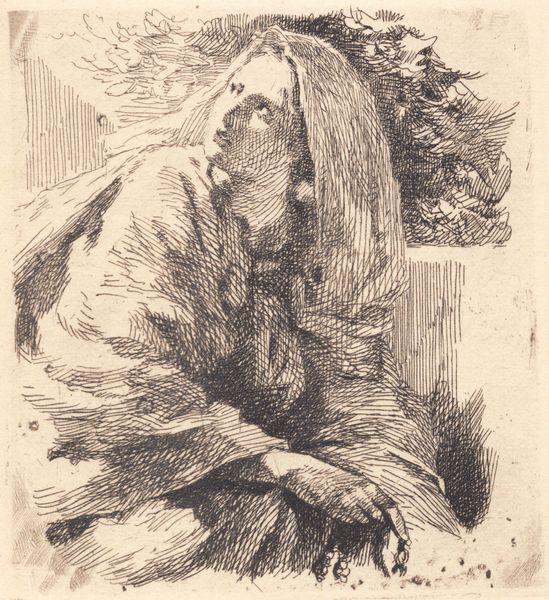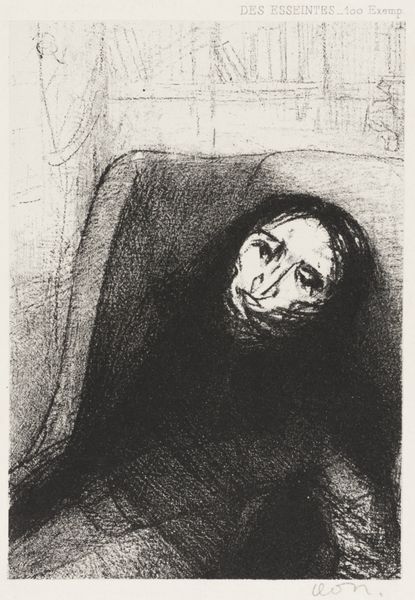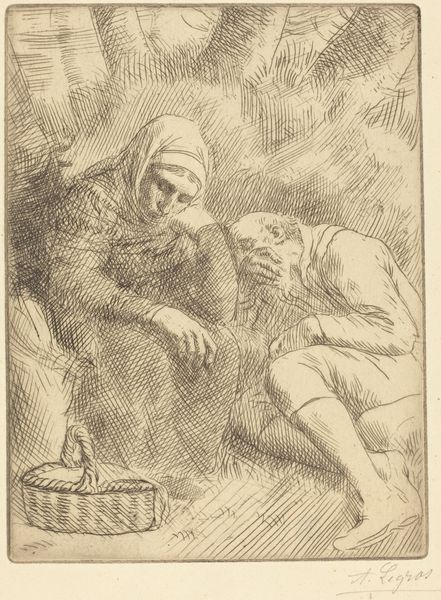
Dimensions: height 132 mm, width 111 mm
Copyright: Rijks Museum: Open Domain
Editor: Here we have "Lezende vrouw bij kaarslicht", or "Woman Reading by Candlelight," created between 1746 and 1793 by Theodorus de Roode, rendered in ink on paper. I'm struck by the intimacy of the scene – a solitary figure illuminated in the dark. What stands out to you about it? Curator: It's fascinating how de Roode uses the iconography of light and shadow. This was a period deeply influenced by Enlightenment ideals, where literacy was expanding beyond the elite. But there was also deep Romantic influence with an emphasis on the individual. The image suggests both the liberating power of knowledge accessible to the individual but equally hints at clandestine studies and a quiet life separate from any sociability, wouldn't you say? Editor: That makes a lot of sense, how access to knowledge can signify progress, but this work seems far from the societal shifts, even if it reflects them in this "individual" way. It has this isolated feel. Do you think that was intentional, setting the subject away from all communal aspects, really diving deep into the reading? Curator: Precisely. This almost feels staged. I wonder if the sitter was part of de Roode’s close social circle. It would shift our interpretation knowing the nature of their interaction to influence this imagery. And this brings forward questions concerning not just social contexts, but institutional structures too. The work in itself brings an aspect of a cultural value, perhaps even bringing a societal comment by portraying it in genre painting style. What do you feel about this? Editor: Wow, I didn't consider all that. It's really interesting how an intimate image like this can have so much to say about society at large, especially about who is in what circle. I thought it was a woman, but now I can see more aspects as we consider all circles, as you say, the work might reveal different faces based on perspectives! Curator: Yes. It seems there’s so much more beneath what seems at first viewing just an illustration about a scene. It seems that in social terms it is more meaningful, at least to me, knowing this could lead into social and cultural revelations. Editor: Thanks, I’m leaving with an all-new perspective! I am grateful I can enrich my ideas about historical contexts when analyzing art!
Comments
No comments
Be the first to comment and join the conversation on the ultimate creative platform.
